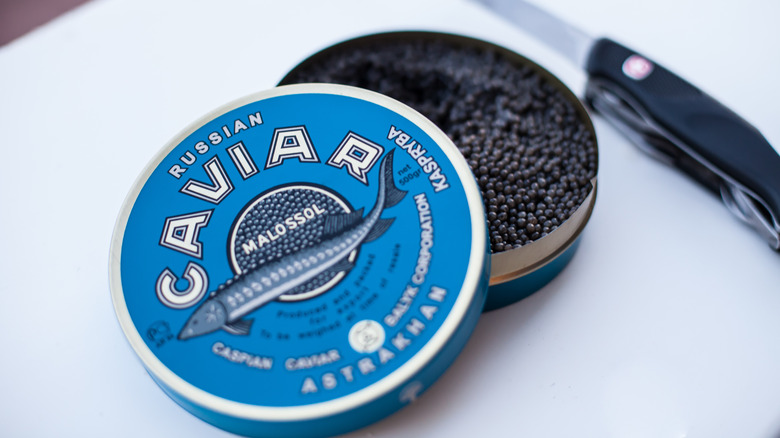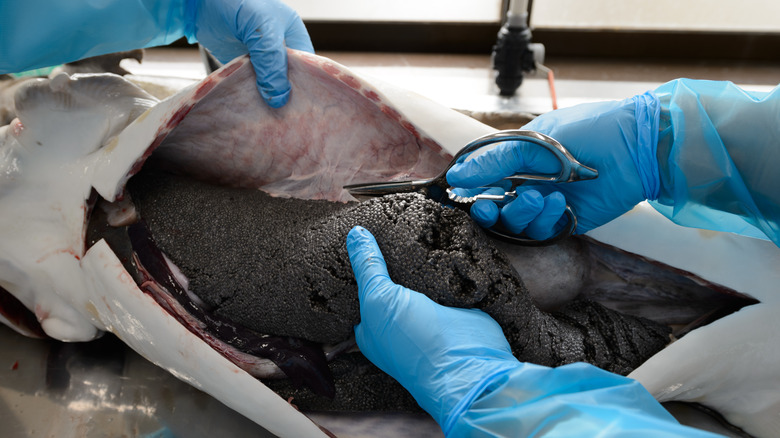What Makes Caviar So Expensive?
If you've ever had caviar, chances are it was probably for a special occasion, and you savored every bit of it on the tiny spoon that came with it. Caviar is not only a delicacy, but it's also considered one of the most highly valued foods in the world (via Caviar Star). On the priciest end, Grade A caviar can cost up to $25,000 per kilogram, but even caviar that isn't quite as rare is still very expensive for a fish product.
From a technical standpoint, caviar is just fish eggs. You can get fish eggs on your sushi without breaking the bank, but what makes these distinctly different from caviar is the type of fish they come from. Cheap "caviar," more commonly known as roe, typically comes from capelin, lumpfish, and salmon. Caviar on the other hand comes from farmed sturgeon. Though there are 27 different species of sturgeon, they are highly endangered (via Business Insider). The scarcity of sturgeon combined with the desirability of caviar as well as the extensive breeding and harvesting process is what makes it so expensive.
How is caviar farmed?
According to Business Insider, obtaining caviar from wild sturgeon was made illegal in 2011 due to reckless overfishing that led to the depletion of the population. These days, all caviar sold comes from farming. While sturgeon can be bred in a controlled environment, that doesn't mean farmers are able to make as much caviar as they want. It takes female sturgeon 8 to 20 years to reach sexual maturity. Only at this point do sturgeon produce caviar. Once enough have accumulated, the eggs are carefully extracted by hand in one of two ways.
The traditional technique, and the more common one, requires the fish to be killed before removing the eggs. The modern method involves the fish being injected with a hormone that allows them to expel the eggs by way of a farmer pressing on the fish's belly. This way the sturgeon doesn't have to die. Unfortunately, however, it's not the life of the sturgeon that people care about, but rather the caviar they produce, and for farmers, the profitability.

